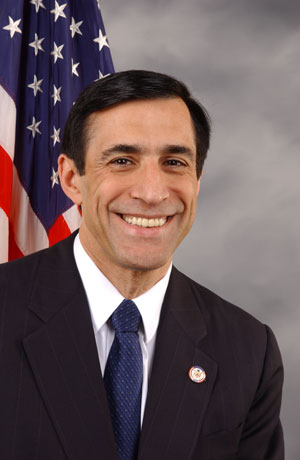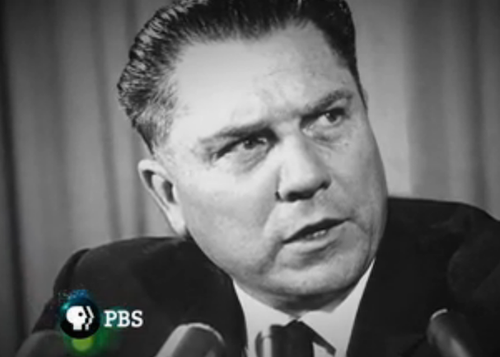
Rep. Darrell Issa on Tuesday told Fox News that acting ATF director Ken Melson should resign — something that’s likely to happen anyways.
Issa, chairman of the House Oversight and Government Reform Committee, called Melson “part of the bad judgment” that led to the disastrous and ill thought out program “Operation Fast and Furious.” The program encouraged gun dealers to sell to straw purchasers — all with the hope of tracing the weapons to the Mexican cartels.
Melson is expected to step down this week and be replaced by Andrew Traver. Traver would likely become acting director pending the outcome of his presidential nomination for the post.
His nomination has already run into problems in the Senate after the NRA came after Traver, the head of the Chicago ATF office. The NRA claims he’s anti-gun owner rights.
Issa also told Fox others should take the blame as well.
“It wasn’t just him,” he said. “This was a program so stupid from the start. … Clearly at Justice, at high levels, they knew the details because they were funding and coordinating this project.”
He said Atty. Gen. Eric Holder “should have known. It was his obligation to know.”
Meanwhile, Sen. Chuck Grassley (R-Ia.) released a letter Tuesday that he wrote to Melson complaining that ATF inaccurately reflected the scope and source of the problem of firearms in Mexico and the drug trafficking organization violence.
The letter is as follows:
Kenneth MelsonActing Director
Bureau of Alcohol, Tobacco, Firearms, & Explosives
U.S. Department of Justice
99 New York Avenue, NE
Washington, DC 20226
Dear Acting Director Melson:
I write today in response to a June 10, 2011, article in The Wall Street Journal titled, “Mexican Guns Tied to U.S.”, which cites a letter you sent to Senator Diane Feinstein, the Chairman of the Senate Caucus on International Narcotics Control (“Caucus”).
As the Co-Chairman of the Caucus, and Ranking Member of the Senate Committee on the Judiciary (“Committee”), I have been investigating serious allegations raised by whistleblowers within the Bureau of Alcohol, Tobacco, Firearms, and Explosives (ATF) that agents knowingly allowed weapons to be sold to straw purchasers who then transferred those weapons to Mexican Drug Trafficking Organizations (“DTOs”).
These allegations were the subject of two Congressional hearings this week and the timing of the release of this information raises questions about why the ATF would choose to release this information publicly now. Further, after reviewing the data presented in the article, I have questions about why ATF provided some select information, but not a more detailed analysis that would help Congress, and the American people, better understand the causes and sources of illegal firearms in Mexico.
Federal law prohibits the ATF from releasing firearm trace data or multiple handgun sales reports, but it does not prohibit the release of aggregate statistical data on illegal gun trafficking. However, I am concerned that the selective release of certain statistical data without further clarification and categorization may inaccurately reflect the scope and source of the problem of firearms in Mexico and the DTO violence. For example, the article states that ATF traced firearms in Mexico that were submitted for tracing by the Government of Mexico (“GOM”) 21,313 firearms in 2009 and 7,971 firearms in 2010. The article further adds that of the firearms traced, 14,213 in 2009 were manufactured in the U.S. or imported to the U.S. from other countries. The article adds that 6,291 firearms in 2010 were either manufactured in the U.S. or imported from other countries. Taken together, these numbers provided the basis for the general estimate that 70% of firearms provided to the ATF from the GOM were traced back to the U.S.
The implication the article makes is that these firearms must come directly from U.S. manufacturers or U.S. Federal Firearms Licensees (“FFLs”) selling guns to DTO members who smuggle the guns over the Southwest border. Unfortunately, this information paints a grossly inaccurate picture of the situation.
First and foremost, it is worth noting that the firearms data discussed in the article is based upon only the firearms that were submitted by the GOM to ATF for tracing. According to a May 6, 2009, article written by the Associated Press, over 305,424 confiscated weapons are locked in vaults in Mexico.[1] The weapons submitted for tracing represent only a small percentage of the number of weapons found to be part of the DTO related crime in Mexico. Further, there has been significant evidence in the media recently regarding the proliferation of weapons in Mexico smuggled out of Central America. For example, at a recent hearing before the Caucus on Central American security cooperation we heard testimony from witnesses that corrupt officers with access to unsecured arsenals in Guatemala and Honduras were an important source of weapons. In one recent media report, they discussed how over 1,100 fragmentation grenades, M-60 machine guns, and over a dozen grenade launchers were recovered in Guatemala at an alleged safe house of the Zetas DTO. That same article added that the Zetas had stolen over 500 weapons from a Guatemalan military base between 2007 and 2008.
Additional evidence regarding the source of weapons in Mexico is contained in an unclassified cable from the U.S. Department of State (“DOS”) dated July 2, 2010, obtained by my office and attached to this letter. The cable, titled, “Mexico Weapons Trafficking – The Blame Game” seeks to dispel rumors about the source of weapons trafficked to Mexico. The unclassified cable includes sections such as: “Myth: An Iron Highway of Weapons Flows from the U.S.,” “Myth: The DTOs Are Mostly Responsible,” “Myth: Mexico Aggressively Investigating Weapons Confiscated,” “Myth: Mexico Methodically Registers and Tracks Weapons,” and “Myth: The GOM Justice System is Tough on Violators of Gun Laws.” While this cable is very candid about the true problem of weapons smuggling inside Mexico, the cover emails forwarding this cable suggest that the ATF and officials associated with the ATF disagreed.
In fact, one email written by Special Agent in Charge William Newell states, “I could go on and on but once our ‘Fast and Furious’ case breaks it will change this.” Unfortunately, it now appears that Special Agent in Charge Newell’s prediction was correct, but instead of an “Iron Highway” operating on its own, it was ATF who fueled the flow of weapons through its “Fast and Furious” investigation which knowingly sanctioned the sale of nearly 2,000 firearms to straw purchasers.
I understand that agents working on tracing weapons in Mexico back to the U.S. routinely instruct GOM authorities to only submit weapons for tracing that have a likelihood of tracing back to the U.S. The purpose of this policy is to direct resources to tracing firearms that may have a U.S. nexus, instead of simply wasting resources on tracing firearms that will not trigger a U.S. source. So, based upon this background information, it is not surprising that reviewing a sample of weapons that is purposefully directed to increase the likelihood of U.S. generated weapons would in fact skew toward the direction of making it look like U.S. gun dealers provide more weapons than they actually do.. However, further discussion of the data that is presented in the article is warranted.
Looking specifically at the information provided by the ATF to Senator Feinstein and the The Wall Street Journal raises some questions when compared more detailed data provided to my office. ATF actually traced 26,813 firearms in 2009 and 9,443 in 2010. Further, that data indicates that of those firearms actually submitted for tracing, a vast majority of those firearms did not come from FFLs (either U.S. based or Mexican based). In fact, of the 26,813 weapons traced in 2009, only 5,800 actually traced back to U.S. or Mexican FFLs. Table 1 illustrates a more detailed breakdown of the firearms data for both 2009 and 2010. The most noteworthy portion of the information is that nearly 78% of firearms traced in 2009 and 66% of firearms traced in 2010 were assigned to a catchall category “No Final Sale Dealer” which means the firearms did not trace back to a United States FFL. This category of firearms includes firearms that have no nexus with U.S. commerce. It also includes firearms where the only nexus to U.S. commerce is that they were manufactured by U.S. companies. This means they are not sold by FFLs in the United States. Instead, they may be sold to foreign countries or militaries requiring approval of the State Department and Homeland Security. Additionally, this category includes firearms in the ATF’s Suspect Gun Database—a category which would include nearly 2,000 firearms as part of ATF’s Fast and Furious Investigation where the ATF knowingly authorized firearm sales to straw purchasers before the weapons were trafficked to Mexican DTOs.




